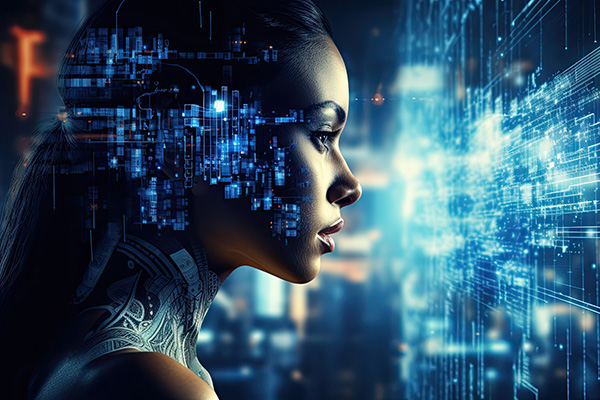spiritual traditions
The Soulful Practice Of Kirtan Chanting
 An ancient spiritual practice less known in the West has transformed my spiritual routine in recent years. It is known as kirtan a beautiful form of devotional chanting that originated in ancient India.
An ancient spiritual practice less known in the West has transformed my spiritual routine in recent years. It is known as kirtan a beautiful form of devotional chanting that originated in ancient India.
The term “kirtan” comes from Sanskrit and means “narrating, reciting, telling, describing” of an idea or story, particularly in a religious context. This enchanting practice weaves together music, meditation, chanting, and a deep sense of spiritual expression.
Kirtan is a central practice in the Bhakti Yoga tradition, which emphasizes love and devotion to a personal deity. It involves the repetitive chanting of mantras and divine names, traditionally in Sanskrit, accompanied by musical instruments such as the harmonium, tabla, and cymbals.
Traditionally, kirtans focus on chanting the names of deities like Krishna, Rama, or Sita. The kirtan leader sings a line and the congregation responds, creating a rhythmic and melodic interplay that is both meditative and invigorating.
While Kirtan remains rooted in its spiritual origins, it has gained global popularity beyond India and the Bhakti tradition. As the practice of yoga has boomed worldwide, kirtan too has seen an immense rise in popularity. It’s a testament to the universal appeal and transformative power of this captivating practice.
Kirtan events and gatherings are known for being welcoming and inclusive, focusing on the shared experience of chanting rather than strict religious adherence. Unlike the typical musical experience in spiritual settings, kirtan invites everyone to participate in a soulful, call-and-response chanting that creates a profound connection to the divine and brings people closer together.
Accessing Your Own Akashic Record
 The ability to access the Akashic Records is traditionally considered a special gift that only a select few prophets or gurus are privy to. It is often mistakenly considered an esoteric practice that only the spiritually advanced or those of us with unique mystical abilities can perform.
The ability to access the Akashic Records is traditionally considered a special gift that only a select few prophets or gurus are privy to. It is often mistakenly considered an esoteric practice that only the spiritually advanced or those of us with unique mystical abilities can perform.
However, this outdated perception is rapidly changing. The modern spiritual landscape embraces the understanding that, with some dedication and practice, anyone can learn to access their own Akashic ‘file.’ This shift is rooted in the notion that these records are not exclusive, but universal.
The records are a karmic birthright, freely available to all who seek to access them with sincere intentions and an open mind, for the simple reason that having free access to one’s own karmic “data” is beneficial to your soul evolution.
The concept of the Akashic Records has fascinated mystics, spiritual seekers, and esoteric scholars for centuries. Rooted in various religious and spiritual traditions, it is described as a universal compendium of all events, thoughts, words, emotions, and intentions that have ever occurred in the past, present, or future.
This metaphysical “library” or “database” exists in the non-physical and underlies the universal field of consciousness and our entire existence. In Sanskrit, the term Akasha (आकाश) is derived from the root word kas, which means “to radiate,” “to shine,” or “to be visible.” The prefix “a” intensifies or negates the root meaning, giving “Akasha” various interpretations such as “ether,” “space,” or “sky.” In Hindu philosophy Akasha is considered one of the five elements that make up the physical world.
12 Universal Spiritual Laws You Need To Know
 Most spiritual seekers today are familiar with the universal Law of Attraction. But did you know that there are several other universal spiritual laws that govern our existence?
Most spiritual seekers today are familiar with the universal Law of Attraction. But did you know that there are several other universal spiritual laws that govern our existence?
The origins of our understanding of the universal spiritual laws are deeply rooted in various religious and philosophical traditions, as well as in the collective wisdom of human experience since the dawn of time.
Many of these spiritual laws are rooted in ancient wisdom traditions from around the world. These traditions evolved over thousands of years as sages, scholars, and spiritual leaders refined and elaborated upon the fundamental principles that govern all existence.
Mystical traditions within various religions have also played an important role in the development and interpretation of these spiritual laws. Mystics tend to explore the deeper, esoteric aspects of their faith, seeking direct experience of divine truths. Their insights and revelations have contributed to a deeper understanding of spiritual principles beyond literal interpretations of religious texts.
Philosophical traditions in ancient Greece, China, and other civilizations also contributed to the development of spiritual principles that later evolved into universal laws. Thinkers such as Plato, Aristotle, Confucius, and Laozi explored concepts related to ethics, metaphysics, and the nature of reality that influenced later spiritual teachings.
Free Yourself From Karmic Debt
 One of the most important things we must do before we leave this life and embrace the next is to ensure that our karmic debts are completely resolved. By doing so, we leave this world unburdened and ready to embrace our next existence with complete bliss.
One of the most important things we must do before we leave this life and embrace the next is to ensure that our karmic debts are completely resolved. By doing so, we leave this world unburdened and ready to embrace our next existence with complete bliss.
Now, if the consequences you may suffer in the afterlife are not of much concern to you, and you feel that karma is not really your problem, you may want to reconsider.
Carrying the heavy burden of karmic debt can also cause considerable misery and struggle in our present daily lives, manifesting as recurring negative patterns and obstacles that hinder our progress and well-being.
Our unresolved karma often leads to dysfunctional relationships, financial difficulties, health problems, and emotional turmoil as past harmful actions generate corresponding negative consequences. An ongoing state of karmic debt fosters feelings of frustration, helplessness, and despair, making it difficult to achieve happiness, joy, fulfillment, and peace.
By carrying the weight of unresolved karmic debt, you may find yourself trapped in a cycle of suffering, unable to break free and achieve the positive, fulfilling life you desire.
Karmic debt is a concept rooted in the spiritual principle of karma, which is a fundamental belief in many Eastern philosophies and religions, especially Hinduism and Buddhism. Karma refers to the universal law of cause and effect, whereby every action has a corresponding reaction. Our poor choices and negative actions create a spiritual debt. By acknowledging this debt and resolving our past mistakes, we achieve a state of inner peace, higher consciousness, spiritual growth and enlightenment.
The True Spiritual Meaning Of The Pentagram
 Perhaps no other spiritual or religious icon is as misunderstood as the pentagram, or pentacle. The true symbolism of the pentagram, a five-pointed star often surrounded by a circle, is commonly misrepresented.
Perhaps no other spiritual or religious icon is as misunderstood as the pentagram, or pentacle. The true symbolism of the pentagram, a five-pointed star often surrounded by a circle, is commonly misrepresented.
Contrary to popular misconceptions that associate it with darkness, evil, or Satanism, the pentagram has multiple meanings within various spiritual and religious traditions, most notably within Paganism and modern Wicca.
The pentagram has been a spiritual symbol of significance for millennia, long before its association with modern religious movements.
Historically, it has been used by cultures around the world, often to represent celestial bodies, principles of harmony, or mystical concepts. Its use first appeared in ancient Greece and Mesopotamia around the 1st millennium BC.
It is not widely known that there are significant historical connections between the pentagram and Christianity. Prior to the widespread use of the cross, the pentagram was a popular symbol to adorn the jewelry and amulets of early Christians, often alongside an “X” or a phoenix. This symbol was associated with the five wounds of Christ and also represented the concept of Alpha and Omega united, as the star could be drawn in one continuous movement of the pen.
In contemporary contexts, particularly within Wicca and related neo-pagan belief systems, the pentacle has positive connotations. It’s seen as a symbol of protection, spirituality, and the interconnectedness of the elements. Each point of the star represents an aspect of balance, holistic existence, conscious living, and the cyclical nature of life.
Praying For Your Departed Loved Ones
 A client recently asked me if there is any benefit to praying for a loved one who has passed away? Does it make a difference in their transition to their new plane of existence? Can it somehow assist them in their continued existence in the afterlife? Can they even hear us?
A client recently asked me if there is any benefit to praying for a loved one who has passed away? Does it make a difference in their transition to their new plane of existence? Can it somehow assist them in their continued existence in the afterlife? Can they even hear us?
We can absolutely connect with the spirits of those who have passed on, although it may sometimes feelas if they cannot hear us. Whether we are praying for them, talking to them, or simply grieving for them, we are connecting with them on a spiritual level and they are hearing us.
In fact, praying for our deceased loved ones has a very positive effect on their soul journey and they deeply appreciate it.
Some people believe that when we die, we go to some blissful realm of perfect existence where all our problems and karmic debts are instantly resolved, or left behind on the earth plane for others to deal with or pick up the pieces. Nothing could be further from the truth.
Most of us will pass away someday with some unresolved issues, negative feelings, resentments, grudges, or regrets that we will need to continue to work on in the afterlife. Of course, some of us will have much more to work on than others. Just because we leave this physical world does not mean that we are free of all our responsibilities and no longer accountable for anything or anyone.
It is therefore helpful to send our prayers to departed loved ones to help them with whatever spiritual or karmic “baggage” they may be taking along with them on their journey to the other side. Although they may leave behind symptoms of illness or financial debt, for example, their spiritual ailments will still need to be healed.
